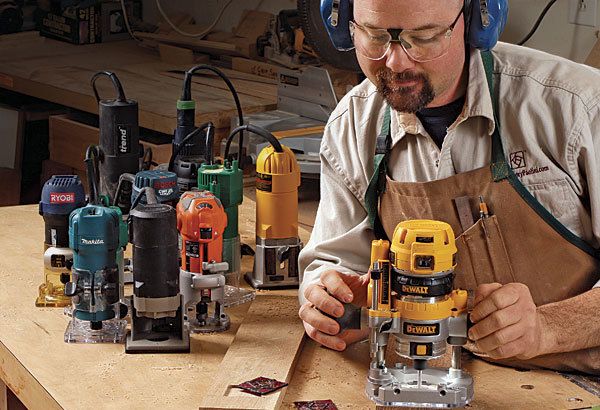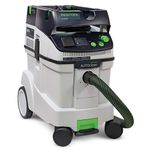Tool test: trim routers
New breed of compact routers is a big win for furniture makers
Synopsis: No longer designed for the single carpentry task of trimming countertop laminate, trim routers have evolved into tools that are perfectly suited to a variety of furniture-making tasks: rounding over and chamfering edges, routing hinge mortises, flush-trimming veneer and edge-banding, routing cavities for inlay, and more. Their small size and light weight makes them agile, so they are easy to move around corners and along curves, and to balance on edges and narrow parts like legs. And they can be used one-handed. To test this new crop of compact routers, Greg Paolini gathered 12 of them in his shop and used them daily to make furniture. Over the course of several months, clear winners emerged.
Routers tested include: DeWalt 611PK, Grizzly H7791, Ridgid R2401, Bosch Colt, DeWalt 26670, Festool MFK 700, Grizzly H7790, Makita 3709, Porter-Cable 450PK, Porter-Cable 7310, Ryobi TR45K, Trend T4.
From Fine Woodworking #220
Watch this video to learn more about trim routers
The last time Fine Woodworking reviewed trim routers (“Laminate Trimmers,” FWW #171), they were tools designed for a single carpentry task: trimming countertop laminate. But they were the only small routers out there, so we worked around their deficits.
Recently, however, manufacturers have responded to user feedback with features that make these tools more versatile and easier to use. The best routers in this new crop are perfectly suited to a variety of furniture-making tasks: rounding over and chamfering edges, routing hinge mortises,
flush-trimming veneer and edge-banding, routing cavities for inlay, and more. Their small size and light weight makes them agile, so they are easy to move around corners and along curves, and to balance on edges and narrow parts like legs. And they can be used one-handed, which means you can fly around a workpiece, holding the router and easing the edges with one hand while holding and repositioning the workpiece with the other.
There are a lot of new models on the market, and choosing one is difficult if you can’t get them all in the shop and try them out. But I’ve done just that, so you don’t have to. I gathered 12 compact routers in my shop and used them daily as I made furniture. Over the course of several months, clear winners emerged.
For the full article, download the PDF below:
Fine Woodworking Recommended Products

Milwaukee M12 23-Gauge Cordless Pin Nailer

Craftsman Random Orbit Sander

Festool Cleantec CT 26 E HEPA Dust Extractor























Log in or create an account to post a comment.
Sign up Log in